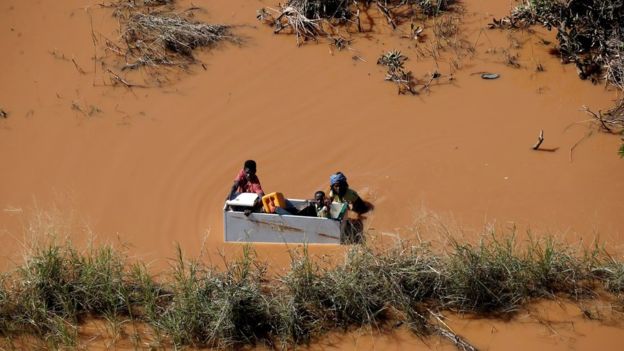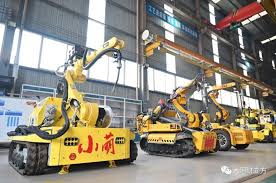‘200 bodies by the roadside’ Cyclone Idai

A stranded motorist in Mozambique spent days trying to get from the port city of Beira to his home in Chimoio in the aftermath of Cyclone Idai, which has destroyed towns and villages in its path and left floods of up to six metres deep.
Graham Taylor, a Zimbabwean agriculture and forestry adviser who has lived in Mozambique’s Manica province for 10 years, had gone to Beira on Friday to help his son with emergency repairs. He told the BBC about his return journey and the scenes he witnessed days before any aid agencies arrived.
I left Beira on Saturday at around 9am. About an hour and a half out going west to Chimoio, I encountered huge flood waters crossing this main newly built highway – vast amounts of water half a metre deep, six to seven kilometres (four to five miles) wide.
I managed to get through this and reached a little sugar town called Lamego. It was here that I became stranded, as ahead it turned out was a further 7km of flooded road, and where I witnessed the most horrific scene.
Hundreds of thousands of people have been affected by the floods.About 95% of the houses had been levelled and destroyed, especially those constructed out of poles and mud. If there was a roof remaining, people were on it. There were people on rooftops and trees – families, kids and babies on trees as far as the eye could see.
For two full days there was absolutely no sign of any assistance anywhere, except for one young white gentleman who lived in Lamego. He may have been with the American Peace Corps. He had managed to get two 100m (330ft) length ropes and a lot of empty 20-litre (four-gallon) yellow plastic bottles, the containers in which cooking oil is sold. He threaded a rope through the handle of the bottles and, using a little boat made of tree bark, he took the rope to a building, tied it to a window frame and then the people climbed out of the building and held on to the floating rope.
He had 10 people working with him and they ushered people along these two ropes in the water. Once the people were off that building, they would take the rope to a tree or another building – a slow process until they reached safety. Plastic containers like these were tied to the ropes in Lamego to save people
For a solid 48 hours while I was there, they never stopped working – throughout the night, they had the vehicle lights shining on the rope and the people. It was a human train of people being ushered and assisted to safety. He did a fantastic job.
This was in a 1,000m radius around him – but my biggest concern was the remaining 200 sq km (77 sq miles) of flood plain heading in the direction of the Buzi and the Pungwe rivers – that’s where most communities live. They reside on the banks of the river. The depth of the water by the road was 3m-4m deep – flowing water. In the distance there was just the most enormous volume of water – a lake, it’s just too big to comprehend.
I had tried to go back to Beira on Saturday but by midday the road had been totally washed away behind me. I sat it out for two nights, sleeping in the car accompanied by two Zimbabwean truck drivers who were also stranded. and we strategised together, we would try and walk through the water, but it was not possible.
After two days the water had subsided a fair bit so we left at 3am, walking with hundreds of other members of the local community moving to safety as we walked using a torch on our cell phones we heard crying and sobbing continually for a solid 10km to 15km stretch.
People were mourning as dead bodies were being washed up against the side of the road. We approximated between us that we saw between 200 and 350 bodies, including children – it was really sad. When I saw that, I just said to myself: “How many more people are dead way inland?”
Surprisingly, we met quite a number of families coming back looking for missing relatives.I saw things that really humbled me, elderly ladies carrying their husbands for kilometres through flood water – that’s physically demanding – and how everyone was helping everyone.We were talking to people along the road, and asking: “Why are you still staying here?” And they would say: “No, I’m waiting. I’m missing family. I’m looking for the bodies.” Some were trying to rescue small amounts of corn that was remaining but most of the crops on the flood plain had not matured so they were not ready to harvest.
After seven hours and 25km we reached a little town called Nhamatanda. It was overpopulated with people who had been affected by the floods – there was transport and buses taking them further inland up the road for safety. I caught the local little buses and hopped along all the way to Chimoio.
Where we were, we didn’t see any sign of crocodiles – there are a lot of crocodiles in the upper reaches of the Pungwe but this flood came from the Buzi river, so they would probably not be in these flood plains. There are never floods here – speaking to a 90-year-old man on the side of the road, he said this hadn’t happened in 90 years.
There is massive deforestation taking place in Mozambique now and this is part of the cause of the problem. Also rural communities cultivate and have vegetable gardens right on the banks of the river and in the river beds. There needs to be projects funded that use solar-powered drip irrigation schemes that can work 100m or 50m away from the river.These are the challenges for the future.





